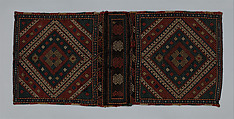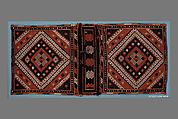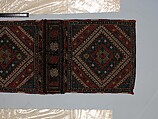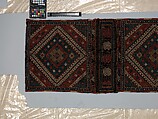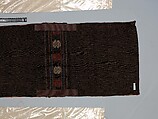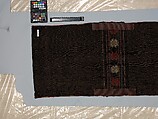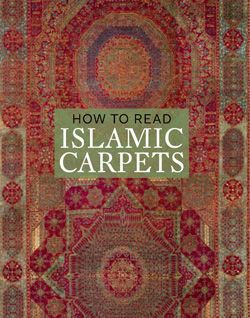Saddle Bag
Not on view
After the circle, the square represents the most basic unit used to create geometric patterns in Islamic art. On this late Ottoman saddlebag, most likely made for a horse or a donkey, the dominant feature is a series of concentric-square diamonds, which appear to originate from four small squares in the center. The convention of repeating units of a design often was used for textiles, as it facilitated the weaving process. Here, as the pattern of square units expands, the larger shapes become cut off, as though a part of an infinite pattern were framed to accomodate the size of the saddlebag. Different colored wool as well as small spirals and triangles that fit into the square units of the grid enliven the overall decoration.
Due to rights restrictions, this image cannot be enlarged, viewed at full screen, or downloaded.
This artwork is meant to be viewed from right to left. Scroll left to view more.
